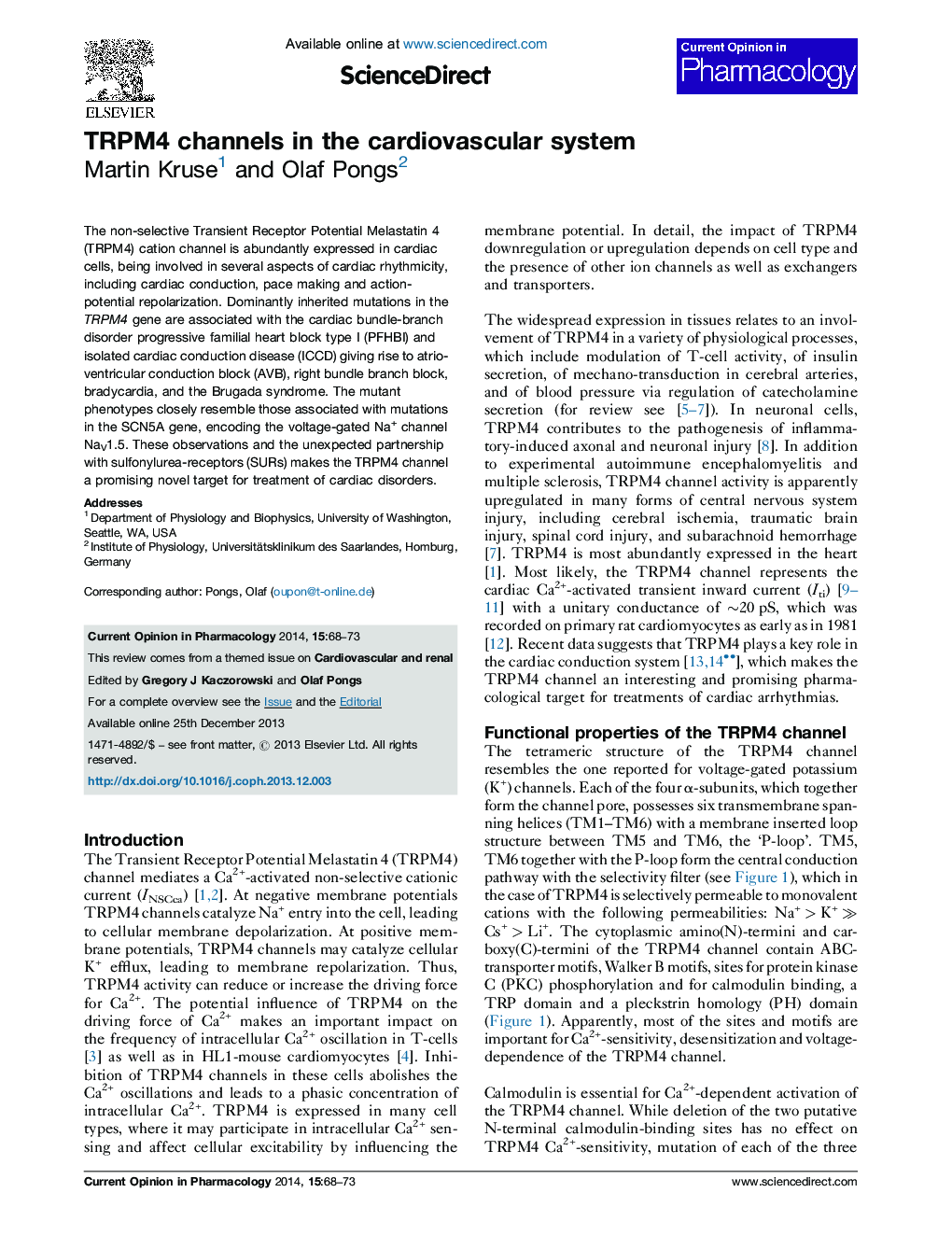| Article ID | Journal | Published Year | Pages | File Type |
|---|---|---|---|---|
| 2529862 | Current Opinion in Pharmacology | 2014 | 6 Pages |
•Mutations in the TRPM4 gene are associated with dysfunctions in the cardiac conduction system.•At the molecular level mutations in TRPM4 lead to gain-of-channel function and loss-of-channel function.•Loss of TRPM4 channel activity in sino-atrial node cells affects pacemaking.•TRPM4 associates with sulfonylurea receptor.•TRPM4 is a novel target for treating cardiac arrhythmia.
The non-selective Transient Receptor Potential Melastatin 4 (TRPM4) cation channel is abundantly expressed in cardiac cells, being involved in several aspects of cardiac rhythmicity, including cardiac conduction, pace making and action-potential repolarization. Dominantly inherited mutations in the TRPM4 gene are associated with the cardiac bundle-branch disorder progressive familial heart block type I (PFHBI) and isolated cardiac conduction disease (ICCD) giving rise to atrio-ventricular conduction block (AVB), right bundle branch block, bradycardia, and the Brugada syndrome. The mutant phenotypes closely resemble those associated with mutations in the SCN5A gene, encoding the voltage-gated Na+ channel NaV1.5. These observations and the unexpected partnership with sulfonylurea-receptors (SURs) makes the TRPM4 channel a promising novel target for treatment of cardiac disorders.
